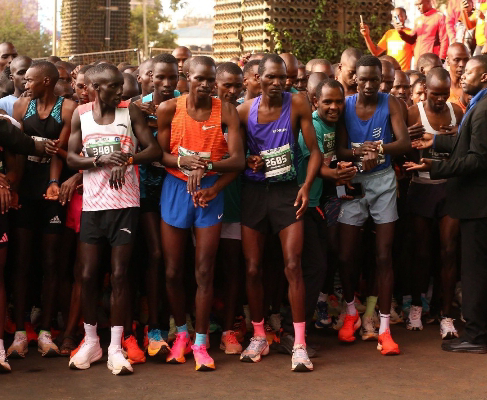BY Brenda Asugu .
The Ministry of Environment, Climate Change and Forestry, World Bank and the World Wide Fund for Nature (WWF) have sets aside 10.6 Million Hectares Restoration Target that will boost the chart path 30%forest cover in Kenya
Speaking at the The Kenya Landscapes Forum , Principal Secretary(PS), State Department for Environment and Climate Change Festus Ngeno said: “Landscape and ecosystem restoration cannot take a silo approach. All ecosystems are interconnected, and interventions in ecosystems must speak to each other, and what more, partners’ interventions and activities must also speak to each other.”
However ,the Principal Secretary(PS) State Department for Wildlife Silvia Museiya added ,"there was need to resit and reth our natural resources can be conserved".
During the forum , Opportunities and Challenges, representatives from various Government ministries, development partners and civil society actors shared the best models of landscape restoration and financing mechanisms from across Kenya, Rwanda, Ethiopia and Costa Rica.
Ms Ruth Tiffer-Sotomayor, Senior Environmental Specialist and AREECA’s Task Team Lead at World Bank, said: “This landscape restoration forum organized with the government and our AREECA partners main objective was to bring together the different stakeholders to share the work that we have been doing under AREECA and shared Forest Landscape Restoration (FLR) investments on going in the country the GoK, Private sector, civil society and bring lessons learned of other FLR projects in other countries to support the government in the ongoing preparation of the National Landscape Strategy understanding in FLR investments.”
The World Bank team on the other hand shared the findings of a preliminary study on the cost benefit analysis of different business models for sustainable forest landscape restoration interventions in selected areas of Makueni, Taita-Taveta and Kwale.
The Bank provided information about the degradation affecting these areas and the importance to target landscape restoration in this corridor which is a biodiversity hotspot area connecting the East and West Tsavo National Parks and an important water tower for lowlands areas. Some of the challenges noted included increased land degradation and human-wildlife conflict worsened by climate change.
Johannes Kirchgatter, Officer Africa Projects, WWF-Germany, said: “This is a unique chance for a truly participatory planning process to jointly restore the fantastic ecosystems of Kenya in a holistic way. Addressing not only the precious water towers but also often neglected ecosystems such as savannahs, rangelands and wetlands is crucial to secure livelihoods, ecosystem functions like water flow and the unique wildlife of Kenya.”
Martin Mulama - Manager, the Southern Kenya Landscape Programme, WWF-Kenya pointed out that “Large-scale restoration approaches in Amboseli have provided best models for replication in other landscapes across the country.He noted that the interventions have led to successful restoration of expansive landscapes, including rangelands and farmlands, and contributed to increased involvement of local communities and improvement of livelihoods.”
The forum brought togetherleading global scientists, activists, indigenous leaders, financiers, policymakers, the private sector, and practitioners in landscape Restoration which enable d them to share insights on global landscape restoration challenges in response to extreme weather conditions and unprecedented changes in global climate conditions.




